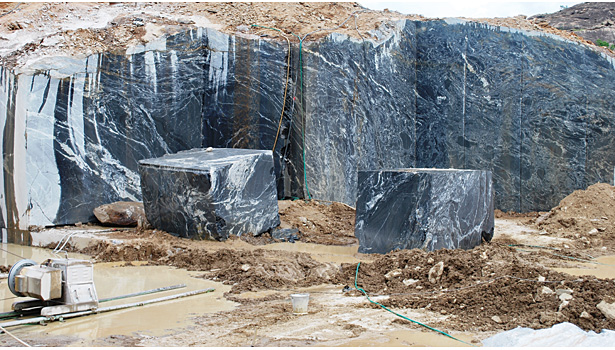Discovering Granite Quarries in South Africa: A Comprehensive Guide
Discovering Granite Quarries in South Africa: A Comprehensive Guide
Blog Article
Unveiling the Mysteries of Granite Quarrying: Where Stamina and Sophistication Meet
The globe of granite quarrying is a realm where the raw stamina of nature assembles with human virtuosity to create structures that stand the test of time with an air of sophistication. From the midsts of quarries to the thorough polishing in workshops, the process of transforming granite into building wonders is an intricate dancing of practice and technology. As we peer into the depths of this ancient craft, we begin to uncover the concealed ins and outs that form the really significance of our constructed environment.
The Origins of Granite Quarrying
In the annals of architectural background, the beginnings of granite quarrying are shrouded in a tapestry of old workmanship and geological wonders. Going back to old Egypt and Mesopotamia, the removal of granite from quarries noted the start of a trip that would ultimately cause the development of a few of the globe's most famous structures.
Granite quarrying's roots can be traced to the experienced artisans who recognized the rock's longevity and visual allure. With a combination of primitive tools and sheer resolution, these very early quarry employees discovered granite blocks that would become the foundation of human beings.
As people progressed, so did the methods of quarrying granite. The Romans, renowned for their engineering expertise, created advanced methods for removing granite to create monuments, temples, and roadways that stood the test of time.
The legacy of these old quarrying methods continues to form contemporary design, with granite remaining an icon of stamina and elegance in building and construction tasks around the globe. (granite quarries in south africa)
Devices of the Quarrying Profession
The evolution of granite quarrying strategies from ancient civilizations to modern times highlights the vital duty played by the devices of the quarrying sell forming the market's techniques. In old times, quarrying tools were primary, typically including knives, hammers, and wedges made from materials like bronze or iron. These devices required substantial manpower and time to remove granite blocks from quarries.

Additionally, the introduction of pneumatically-driven devices and high-powered equipment has actually click to find out more substantially minimized the physical labor needed in quarrying operations, improving worker safety and performance. As the quarrying sector proceeds to introduce, the tools of the trade continue to be at the center of driving progression and shaping the future of granite extraction.
Removing Blocks of Granite
Making use of accuracy machinery and advanced techniques, the removal of granite blocks from quarries has become an innovative procedure in the contemporary quarrying industry. The first action includes identifying the area and size of the granite deposit to establish one of the most effective extraction method. As soon as an appropriate site is picked, the extraction procedure starts with the drilling of more helpful hints openings for the placement of explosives. Regulated blasting strategies are then employed to disintegrate the granite into convenient sections.

Sprucing Up and Completing Techniques
To achieve a perfect surface area on granite blocks, competent craftsmens employ a series of thorough polishing and completing strategies. After the initial extraction and forming procedures, the granite obstructs undergo a detailed polishing phase to improve their all-natural beauty and sturdiness.
In enhancement to sprucing up, finishing methods are related to more refine the granite's appearance. These methods may consist of flaming, sharpening, or cleaning, each offering unique appearances and finishes to suit different aesthetic preferences. Flaming, for example, entails revealing the granite surface area to heats to produce a rough, textured surface, suitable for outside applications where slip-resistance is crucial. Honing, on the other hand, provides a matte finish that is smooth to the touch, perfect for indoor countertops and flooring. By thoroughly choosing and applying these polishing and finishing techniques, find more information artisans can change raw granite obstructs right into elegant items that display both stamina and sophistication.

Ecological Impact and Sustainability
With the expanding focus on environmental awareness in the industry, granite quarrying methods are significantly scrutinized for their influence on natural resources and lasting sustainability. Quarrying for granite can have significant environmental effects. The removal process commonly involves using hefty equipment, explosives, and large quantities of water, bring about habitat destruction, dirt disintegration, and water air pollution. Additionally, the transportation of granite from quarries to refining centers creates carbon emissions, even more adding to ecological destruction. granite quarries in south africa.
To minimize these influences and ensure sustainability in granite quarrying, industry stakeholders are adopting various measures. Implementing advanced technologies to reduce energy consumption and water use, redeeming quarried land for eco-friendly reconstruction, and advertising liable sourcing methods are some methods being utilized. Additionally, accreditations such as the Forest Stewardship Council (FSC) and the Leadership in Power and Environmental Style (LEED) assistance consumers identify eco-friendly granite products.
Verdict
To conclude, granite quarrying is a process that needs specialized tools and strategies to extract blocks of granite and brighten them to a high level of coating. While the environmental influence of quarrying can be significant, initiatives are being made to improve sustainability techniques in the industry. On the whole, granite quarrying is a delicate equilibrium between taking advantage of the strength and sophistication of this natural stone while decreasing its effect on the setting.
Report this page